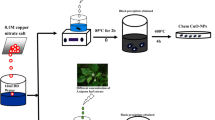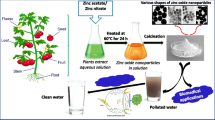Abstract
Hydroxylated polychlorobiphenyls (OH-PCBs) are major metabolites of PCBs that are widely distributed in the environment. While the effects of penta- to hepta-chlorinated OH-PCBs on neuronal differentiation have been widely reported, those of lower chlorinated OH-PCBs have not been extensively studied. To investigate the effects of lower chlorinated OH-PCBs on neuronal development, we studied the effects of mono- to hexa-chlorinated OH-PCBs on PC12 cells. Morphological changes were examined using an automatic system IN Cell Analyzer. Seventeen of the 20 OH-PCBs investigated promoted neuronal elongation in an OH-PCB concentration-dependent manner, while three OH-PCB congeners suppressed neuronal elongation based on Dunnett’s analysis. In particular, the top five OH-PCBs (4OH-PCB2, 4′OH-PCB3, 4′OH-PCB25, 4′OH-PCB68, and 4′OH-PCB159), which have hydroxyl groups at the para-position and chlorine substitutions at the 2, 4, or 3′ positions, significantly promoted neuronal elongation. Moreover, these neuronal elongations were suppressed by U0126, and phosphorylation of extracellular signal-regulated kinase (ERK) 1/2 was observed in PC12 cells treated with 4OH-PCB2, 4′OH-PCB25, and 4′OH-PCB159. Taken together, our results indicate that the effect of OH-PCB on neuronal development is not dependent on the number of chlorine groups but on the chemical structure, and the mitogen-activated kinase kinase (MEK)-ERK1/2 signaling pathway is involved in this process.






Similar content being viewed by others
References
Angus WG, Contreras ML (1994) The effects of Aroclor 1254 on undifferentiated and NGF-stimulated differentiating PC12 cells. Neurotoxicology 15:809–817
Arita-Morioka K, Yamanaka K, Mizunoe Y, Ogura T, Sugimoto S (2015) Novel strategy for biofilm inhibition by using small molecules targeting molecular chaperone DnaK. Antimicrob Agents Chemother 59:633–641
Arulmozhiraja S, Shiraishi F, Okumura T, Iida M, Takigami H, Edmonds JS, Morita M (2005) Structural requirements for the interaction of 91 hydroxylated polychlorinated biphenyls with estrogen and thyroid hormone receptors. Toxicol Sci 84:49–62
Bhumika S, Darras VM (2014) Role of thyroid hormones in different aspects of nervous system regeneration in vertebrates. Gen Comp Endocrinol 203:86–94
Chang YJ, Hsu CM, Lin CH, Lu MS, Chen L (2013) Electrical stimulation promotes nerve growth factor-induced neurite outgrowth and signaling. Biochim Biophys Acta 1830:4130–4136
Das KP, Freudenrich TM, Mundy WR (2004) Assessment of PC12 cell differentiation and neurite growth: a comparison of morphological and neurochemical measures. Neurotoxicol Teratol 26:397–406
Davis PJ, Leonard JL, Davis FB (2008) Mechanisms of nongenomic actions of thyroid hormone. Front Neuroendocrinol 29:211–218
Dreiem A, Rykken S, Lehmler HJ, Robertson LW, Fonnum F (2009) Hydroxylated polychlorinated biphenyls increase reactive oxygen species formation and induce cell death in cultured cerebellar granule cells. Toxicol Appl Pharmacol 240:306–313
Fan CY, Besas J, Kodavanti PR (2010) Changes in mitogen-activated protein kinase in cerebellar granule neurons by polybrominated diphenyl ethers and polychlorinated biphenyls. Toxicol Appl Pharmacol 245:1–8
Grimm FA, Hu D, Kania-Korwel I, Lehmler HJ, Ludewig G, Hornbuckle KC, Duffel MW, Bergman Å, Robertson LW (2015) Metabolism and metabolites of polychlorinated biphenyls. Crit Rev Toxicol 45:245–272
Hu D, Lehmler HJ, Martinez A, Wang K, Hornbuckle KC (1994) Atmospheric PCB congeners across Chicago. Atmos Environ 44:1550–1557
Kawano M, Hasegawa J, Enomoto T, Onishi H, Nishio Y, Matsuda M, Wakimoto T (2005) Hydroxylated polychlorinated biphenyls (OH-PCBs): recent advances in wildlife contamination study. Environ Sci 12:315–324
Kimura-Kuroda J, Nagata I, Negishi-Kato M, Kuroda Y (2002) Thyroid hormone-dependent development of mouse cerebellar Purkinje cells in vitro. Brain Res Dev Brain Res 137:55–65
Kimura-Kuroda J, Nagata I, Kuroda Y (2005) Hydroxylated metabolites of polychlorinated biphenyls inhibit thyroid-hormone-dependent extension of cerebellar Purkinje cell dendrites. Brain Res Dev Brain Res 54:259–263
Kimura-Kuroda J, Nagata I, Kuroda Y (2007) Disrupting effects of hydroxy-polychlorinated biphenyl (PCB) congeners on neuronal development of cerebellar Purkinje cells: a possible causal factor for developmental brain disorders? Chemosphere 67:412–420
Kitamura S, Jinno N, Suzuki T, Sugihara K, Ohta S, Kuroki H, Fujimoto N (2005) Thyroid hormone-like and estrogenic activity of hydroxylated PCBs in cell culture. Toxicology 208:377–387
Kudo TA, Kanetaka H, Mizuno K, Ryu Y, Miyamoto Y, Nunome S, Zhang Y, Kano M, Shimizu Y, Hayashi H (2011) Dorsomorphin stimulates neurite outgrowth in PC12 cells via activation of a protein kinase A-dependent MEK-ERK1/2 signaling pathway. Genes Cells 16:1121–1132
Kunisue T, Tanabe S (2009) Hydroxylated polychlorinated biphenyls (OH-PCBs) in the blood of mammals and birds from Japan: lower chlorinated OH-PCBs and profiles. Chemosphere 74:950–961
Langeveld WT, Meijer M, Westerink RH (2012) Differential effects of 20 non-dioxin-like PCBs on basal and depolarization-evoked intracellular calcium levels in PC12 cells. Toxicol Sci 126:487–496
Lans MC, Klassonwehler E, Willemsen M, Meussen E, Safe S, Brouwer A (1993) Structure-dependent, competitive interaction of hydroxy-polychlorobiphenyls, hydroxy-dibenzo-p-dioxins and hydroxy-dibenzofurans with human transthyretin. Chem Biol Interact 88:7–21
Londoño M, Shimokawa N, Miyazaki W, Iwasaki T, Koibuchi N (2010) Hydroxylated PCB induces Ca2+ oscillations and alterations of membrane potential in cultured cortical cells. J Appl Toxicol 30:334–342
Machala M, Bláha L, Lehmler HJ, Plísková M, Májková Z, Kapplová P, Sovadinová I, Vondrácek J, Malmberg T, Robertson LW (2004) Toxicity of hydroxylated and quinoid PCB metabolites: inhibition of gap junctional intercellular communication and activation of aryl hydrocarbon and estrogen receptors in hepatic and mammary cells. Chem Res Toxicol 17:340–347
Marek RF, Martinez A, Hornbuckle KC (2013) Discovery of hydroxylated polychlorinated biphenyls (OH-PCBs) in sediment from a Lake Michigan waterway and original commercial aroclors. Environ Sci Technol 47:8204–8210
Meacham CA, Freudenrich TM, Anderson WL, Sui L, Lyons-Darden T, Barone S Jr, Gilbert ME, Mundy WR (2005) Shafer TJ. Accumulation of methylmercury or polychlorinated biphenyls in in vitro models of rat neuronal tissue. Toxicol Appl Pharmacol 205:177–187
Meerts IA, Lilienthal H, Hoving S, van den Berg JH, Weijers BM, Bergman A, Koeman JH, Brouwer A (2004) Developmental exposure to 4-hydroxy-2,3,3′,4′,5-pentachlorobiphenyl (4-OH-CB107): long-term effects on brain development, behavior, and brain stem auditory evoked potentials in rats. Toxicol Sci 82:207–218
Mizukami-Murata S, Sakakibara F, Fujita K, Fukuda M, Kuramata M, Takagi K (2016) Detoxification of hydroxylated polychlorobiphenyls by Sphingomonas sp. strain N-9 isolated from forest soil. Chemosphere 165:173–182
Nomiyama K, Murata S, Kunisue T, Yamada TK, Mizukawa H, Takahashi S, Tanabe S (2010) Polychlorinated biphenyls and their hydroxylated metabolites (OH-PCBs) in the blood of toothed and baleen whales stranded along Japanese coastal waters. Environ Sci Technol 44:3732–3738
Quinete N, Schettgen T, Bertram J, Kraus T (2014) Occurrence and distribution of PCB metabolites in blood and their potential health effects in humans: a review. Environ Sci Pollut Res 21:11951–11972
Routti H, Letcher RJ, Arukwe A, Van Bavel B, Yoccoz NG, Chu S, Gabrielsen GW (2008) Biotransformation of PCBs in relation to phase I and II xenobiotic-metabolizing enzyme activities in ringed seals (Phoca hispida) from Svalbard and the Baltic Sea. Environ Sci Technol 42:8952–8958
Seow SL, Eik LF, Naidu M, David P, Wong KH, Sabaratnam V (2015) Lignosus rhinocerotis (Cooke) Ryvarden mimics the neuritogenic activity of nerve growth factor via MEK/ERK1/2 signaling pathway in PC-12 cells. Sci Rep 5:16349–16362
Shimokawa N, Miyazaki W, Iwasaki T, Koibuchi N (2006) Low dose hydroxylated PCB induces c-Jun expression in PC12 cells. Neurotoxicology 27:176–183
Tehrani R, Van Aken B (2014) Hydroxylated polychlorinated biphenyls in the environment: sources, fate, and toxicities. Environ Sci Pollut Res Int 21:6334–6345
Ueno D, Darling C, Alaee M, Campbell L, Pacepavicius G, Teixeira C, Muir D (2007) Detection of hydroxylated polychlorinated biphenyls (OH-PCBs) in the abiotic environment: surface water and precipitation from Ontario, Canada. Environ Sci Technol 41:1841–1848
van den Hurk P, Kubiczak GA, Lehmler HJ, James MO (2002) Hydroxylated polychlorinated biphenyls as inhibitors of the sulfation and glucuronidation of 3-hydroxy-benzo[a]pyrene. Environ Health Perspect 110:343–348
Vaudry D, Stork PJ, Lazarovici P, Eiden LE (2002) Signaling pathways for PC12 cell differentiation: making the right connections. Science 296:1648–1649
Wayman GA, Bose DD, Yang D, Lesiak A, Bruun D, Impey S, Ledoux V, Pessah IN, Lein PJ (2012) PCB-95 modulates the calcium-dependent signaling pathway responsible for activity-dependent dendritic growth. Environ Health Perspect 120:1003–1009
Yoo YE, Hong JH, Hur KC, Oh ES, Chung JM (2004) Iron enhances NGF-induced neurite outgrowth in PC12 cells. Mol Cells 17:340–346
Acknowledgments
This work was supported by a grant from the Research Fellow of Japan Society for the Promotion of Science (JSPS KAKENHI Grant Number 2640107). We thank Dr. Hiroko Kitamoto and Yuka Yoshinouchi for helpful comments.
Author information
Authors and Affiliations
Corresponding author
Additional information
Responsible editor: Philippe Garrigues
Rights and permissions
About this article
Cite this article
Mizukami-Murata, S., Fujita, K. & Nakano, T. Effect of lower chlorinated hydroxylated-polychlorobiphenyls on development of PC12 cells. Environ Sci Pollut Res 25, 16434–16445 (2018). https://doi.org/10.1007/s11356-017-9604-2
Received:
Accepted:
Published:
Issue Date:
DOI: https://doi.org/10.1007/s11356-017-9604-2




